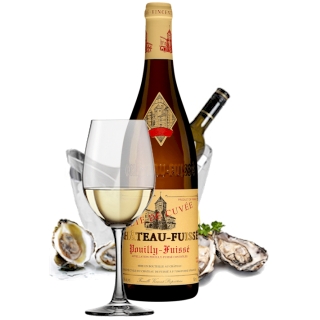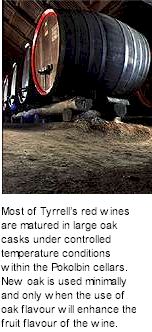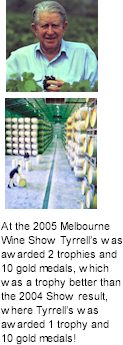


It is a story about pioneers, men and women who transformed the Hunter Valley of NSW, planted grapes there, and looked for better ways to make wine. English immigrant Edward Tyrrell planted his first vines in the Hunter Valley in 1858 establishing Tyrrell's Wines after receiving a land grant in apparently poor pastureland in the lee of the Hunter Valley's Brokenback range.

His first vintage was in 1864 and by the turn of the century the land had became recognised as some of the Hunter Valley's finest vineyard land. The Hunter Valley was ideal for the production of premium wines, notably Shiraz in the reds and Semillon in the whites. Both made table wines of power and distinction, with the ability to age beautifully in the bottle. These two varieties provided the basis for the beginning of the Tyrrells premium Winemakers Selection Range.
Tyrrell's vineyards are established in Australia's premium wine growing regions - McLaren Vale, Limestone Coast and Heathcote - but still call the Hunter Valley home. Most of the distinguished Tyrrell Hunter Valley wines are grown at the Pokolbin and Ashmans Vvineyards in the heart of the Lower Hunter Valley, very near the winery itself.
These are all non-irrigated, dry grown vineyards, dependant entirely on 750mm of rainfall a year. Yields are very low from these vines, but the fruit is of the highest possible quality. Vines are characteristically short, (often less than one metre tall) and gnarled.
This clever design by mother nature together with experienced vineyard management has ensured that over the generations the vines have grown to efficiently distribute the precious and rare moisture to the grape bunches. The Lower Hunter does actually have extensive subterranean water pockets, but due to the proximity to the coast and ocean, this water is too high in salinity to be used on vines. Vines on Tyrrells original blocks around Ashmans winery are amongst the oldest in the Hunter Valley at 70 to 120 years old.
The Tyrrell's Glenbawn Estate Vineyard was planted in the late 1960's and the winery completed for the 1974 vintage. The area has a lower average rainfall than the Lower Hunter Valley, but close proximity to Lake Glenbawn on the Hunter River provides a reliable source of water for drip irrigation. Machine harvesting of these vineyards makes the most of cooler temperatures at night. The winery now processes over 2500 tonnes of fruit and must during the vintage period. During the year blended products or parcels of wine are transported by tanker to the Ashman's winery in Pokolbin for bottling, blending or further oak maturation.
The Heathcote area in Central Victoria is fast becoming known as one of Australia's superstar wine growing areas. Spotting this potential some years ago, Bruce Tyrrell secured over 80 acres of prime land around the Mt Camel range. Shiraz wines of unimaginable depth of colour and extreme weight of fruit are now the hallmarks of this relatively new region. The relatively young vines upon this particular vineyard are planted in the russet red cambrian soil, found at the foot of Mt Carmel at the Southern end of the Colbinabbin Range. Wines are relatively low yielding but produce extremely high quality grapes. Climate is warm, dry and reliable from year to year.
Generous cloud cover and mild temperatures are common throughout the area, allowing the grapes to ripen slowly. The fruit here is machine harvested and partially machine pruned, as human pickers and pruners are hard to come by in this winegrowing region's inhospitable environment. Must juice is then transported back to Ashman's Winery in the Hunter to complete its transformation into wine. The terra rossa soil is found in patches throughout the Limestone Coast area.
A new 1000 tonne crushing facility was built at Tyrrell's McLaren Vale vineyard in time for the 1997 harvest. Juice is transported back to Ashmans in the Hunter Valley to complete its transformation into finished wine. Late 1998 has seen the removal of Pedro Ximines grapes (sold for fortified wine) replaced with 10 acres of new Cabernet Sauvignon. McLaren Vale is a region rich with assorted soil types. As a result of this variety nearly all grape varieties flourish in the region. Summer rainfall is low, so irrigation is a necessity.
